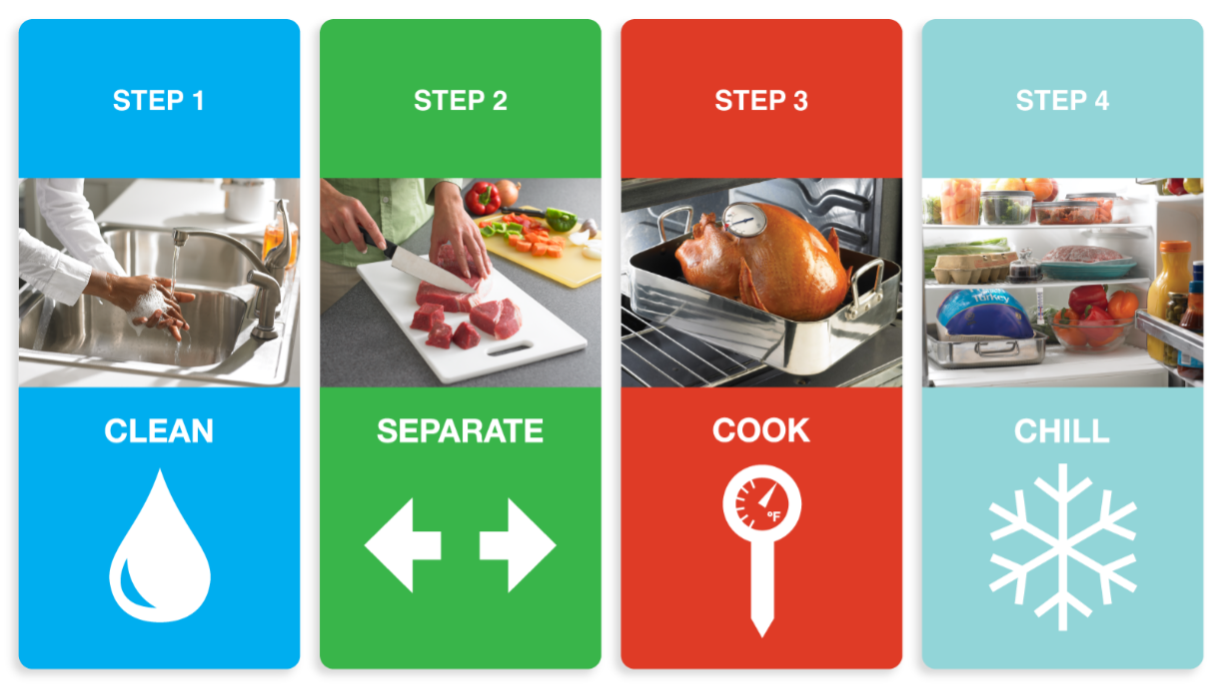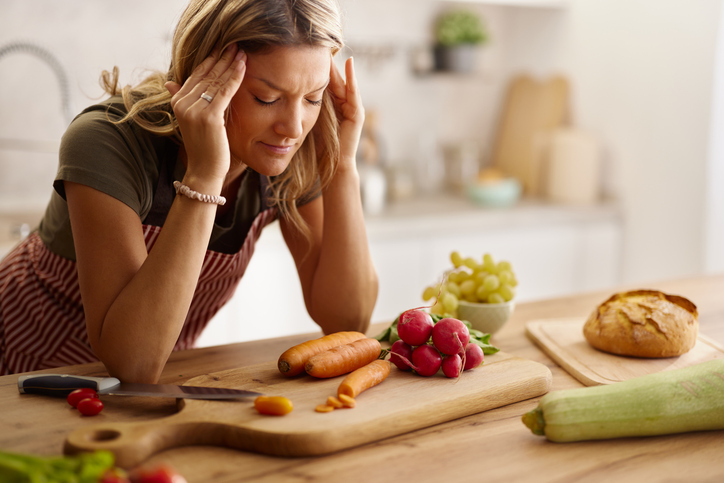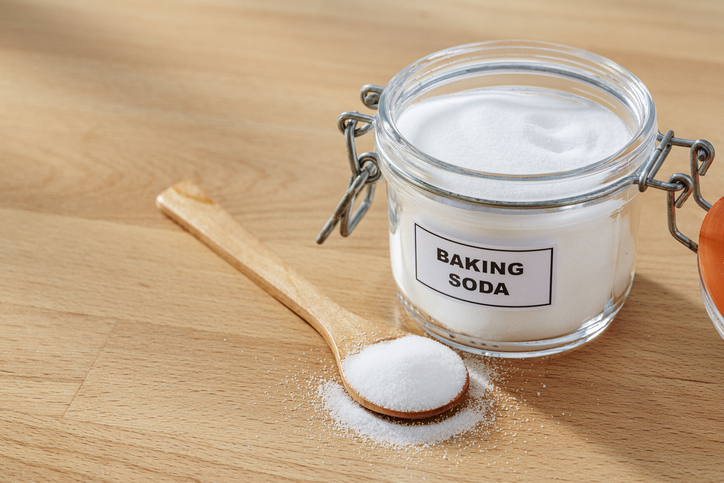Shopping for and Storing Food Safely
If you have yet to set a new year’s resolution, February is not too late. Commit to food safety this year! Although it is not the most glamorous topic, food safety is one of the most important skills for any home cook. You may be familiar with the four main principles of food safety—clean, separate, cook, chill—but there is even more to dig into to be sure you are serving the safest food for yourself, your family, and your friends.
Wash Your Hands
The first step in any food safety training is handwashing. It may seem silly to mention—everyone washes their hands, right? However, you may not be washing your hands effectively enough to remove bacteria that could transfer into food. Wash your hands for at least 20 seconds with warm water and soap. It might feel long when you first start counting, but this is your first line of defense to keeping your food safe. Be sure to wash your hands during the following moments:
- After using the restroom.
- Before beginning food prep, even if the food you are about to prepare will be cooked.
- After touching a pet or a toddler’s sticky hands.
- After handling raw meat, poultry, or seafood.
- After using cleaning supplies.
- Whenever you feel like your hands might need it!
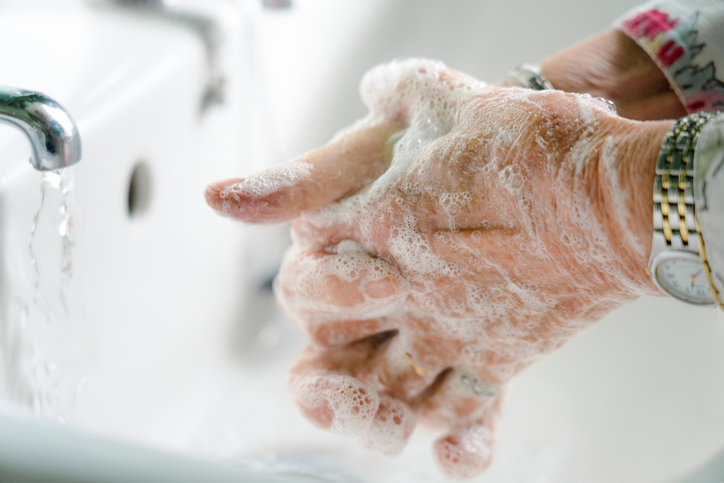
Before Cooking
Clean hands are the precursor for safe cooking, and safe storage is essential before or after cooking. Food storage is its own ball game in the food safety world. In general, food should stay out of the temperature danger zone (between 41°F and 135°F) as much as possible. When grocery shopping, refrigerate foods within two hours. Take into account the trip home from the store or food pantry as well as how long it takes to put the food into the fridge.
After Cooking
After cooking a meal, the two-hour rule still applies. Even though the last thing you want to do after cooking a meal is clean up the kitchen, the longer food stays out on the counter, the more likely it is to grow harmful bacteria that can make you sick. The general rule of thumb is that food should cool quickly within two hours to 70°F and then down to 40°F within the next four hours. You will likely be able to get your food out of the danger zone even quicker when at home, so you should be in the clear!
For other shopping and storage tips, take a look at this graphic below from the FDA.
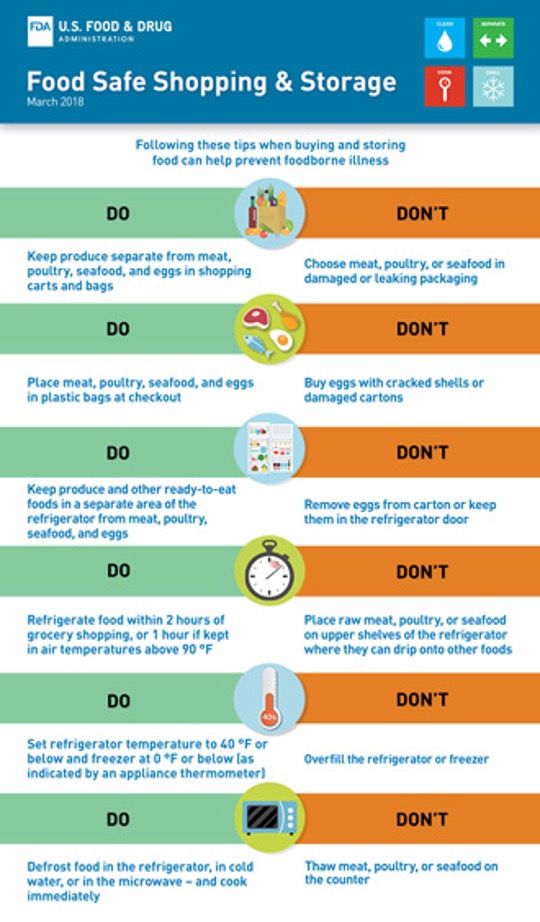
from: https://www.fda.gov/food/buy-store-serve-safe-food/food-safety-your-kitchen
Weeks (or Months) Later
Packaged Foods
You may have done everything perfectly when cooking and cooling, but sometimes leftovers get shoved to the back of the fridge or freezer. Pre-packaged foods have best by dates or other recommendations for freshness and quality, but they do not necessarily represent a strict expiration date for the food. Other packaged foods, such as juice and sauces, may have the phrase “Use within 7 days after opening” or something similar printed on them. Follow this advice as well as your best judgment to both keep yourself safe from illness and to avoid excessive food waste. Recalls and safety alerts can also tell you if a purchased product is part of foodborne illness outbreak. You can sign up for these alerts from the FDA.
Homemade Foods
Food that you made yourself obviously does not have a best by date or recommended use by date printed on it. In that case, use the following advice:
- Use leftovers within 3 or 4 days if refrigerated.
- Freeze leftovers and use them within 3 or 4 months. Technically, they can be safely frozen indefinitely, but the quality will decrease after the first few months.
- Refreeze leftovers that have been safely reheated if they are not used. You do not need to throw away food that was thawed and reheated, as long as it was reheated safely up to 165°F every time.
- Write your own dates on your packaged foods. Use tape on reusable containers or write directly on disposable containers to note either when you prepared the food or the latest it should be used.
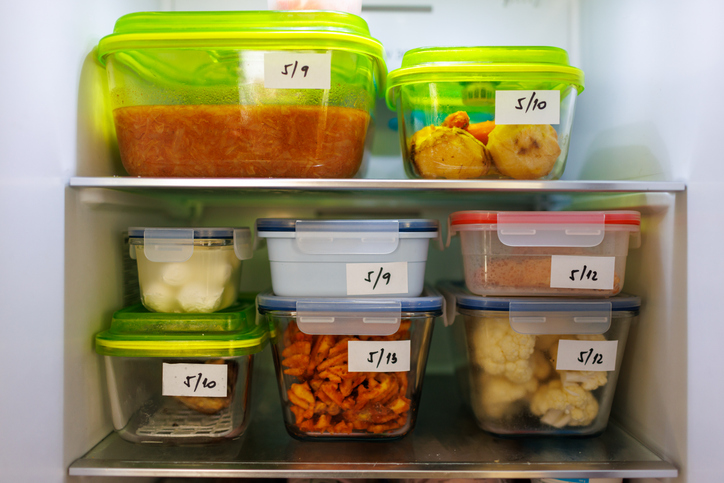
Stay Safe, Stay Healthy
Food safety might seem overwhelming at first, but a few simple steps can make your life easier and healthier. Keep yourself and whoever you may cook for safe from foodborne illness by washing your hands, keeping cold foods cold and hot foods hot, and keeping track of how long your leftovers have been in the refrigerator. Good food safety can reduce food waste and save you money in the long run.
Did you find this blog post helpful? Please click the heart button!

